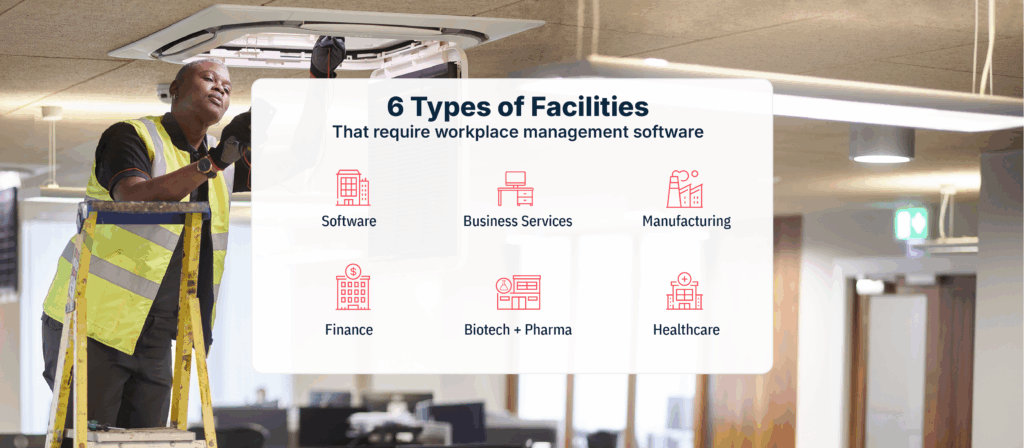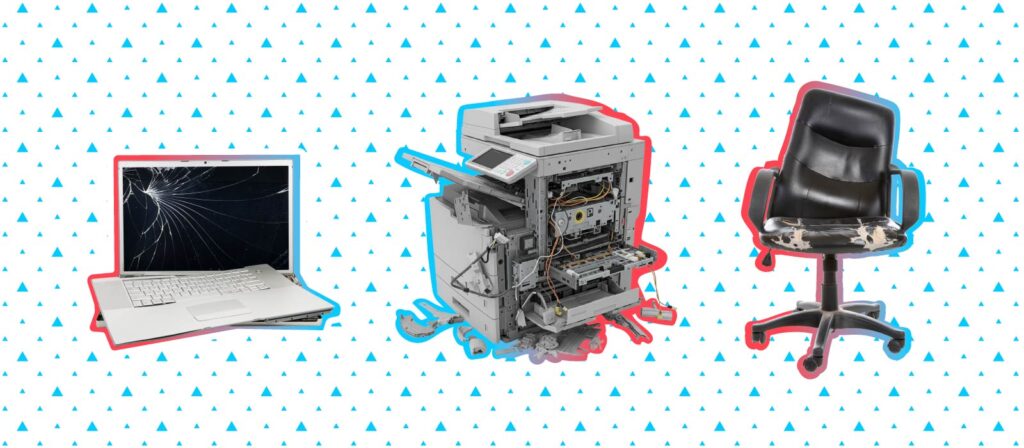What is IFM? How can I get into integrated facilities management?
By David Spence• 5 mins read•November 27, 2018

If you’re involved in the management of your company’s office environment in any way, you’ve probably heard of integrated facilities management (IFM), but what is IFM?
What is integrated facilities management? Facilities management is the professional management of one or more buildings, focused on efficiency and effectiveness of the organizations or occupants within the facility. Simply put, it is a method of consolidating many (or all) of your office-related services and processes under one contract and management team.
If this high-level definition sounds a little dry and simple on paper, anyone with a stake in the company bottom line can appreciate the ground-level improvements it results in. Implemented properly, IFM can streamline internal and vendor-facing communication, simplify the management of day-to-day operations and improve productivity and wellness across your organization.
With a basic explanation of IFM out of the way, you’re probably wondering what it looks like in practice. How do you apply the principles of integrated facilities management to your particular office environment? Read on for a deeper dive into IFM and the steps you need to get there.
What is IFM? The benefits of implementing IFM

Streamlined, efficient work and task management
At its core, IFM is a consolidative move. Depending on your current facilities management structure, that could mean dropping multiple vendor contracts in favor of a single service agreement or placing a lengthy list of responsibilities—traditionally handled by different internal teams—under a single umbrella. Either way, the practice results in fewer contracts, teams and bucketed resources to juggle, and a bird’s-eye view of management tasks. Compared to overseeing each independent stakeholder and each individual task they manage multiple times over, this increased visibility means more effective management of teams, quicker responses to requests and less downtime for employees.
A focus on the bigger picture
The benefits of a simplified structure through IFM don’t stop there, either. Instead of bouncing between multiple tasks and teams—or putting out multiple fires at the same time—this bird’s-eye view ultimately allows you to align tasks with the business’s larger goals. When you’re able to step out of the constant day-to-day management of workflow, you’re given the time and freedom needed to take a more strategic approach to facilities management. With a broader view of company goals on one end and more granular control of core processes on the other, this makes it easier to assume a more impactful role within the organization. Ultimately, less micromanagement means more time to look at the bigger picture.
Reduction of operating costs
With multiple internal teams managing different components of the workplace, redundancy and overlap is inevitable. Costs can also balloon as different teams spend their time and budgets on initiatives that don’t align with larger company goals. With IFM, inefficiency and unnecessary spending becomes much easier to identify, since there’s greater visibility. The same also holds true for external vendors. Managing a single budget is almost always going to reduce materials and vendor costs, and that’s before considering the increase in productivity that comes with overseeing a single team (as opposed to multiple partners or employees).
All of the above undoubtedly sounds enticing, so what does a move towards IFM look like? The four steps below outline how you can take a more integrated approach to your facilities management.
What is IFM? How to move to integrated facilities management

The three Rs: research, research, research
Switching to IFM means making some fundamental changes to operations and adjusting a lot of moving parts, so IFM implementation should only come after extensive research. Start with your industry’s best practices, where possible: reports, white papers and industry publications should be a good source of knowledge here. You can also talk to consultants and IFM vendors themselves, specifically those with service history in your field. At the other end, you also want to do thorough internal research to understand exactly how your different teams currently operate. You can only create a roadmap towards IFM implementation once you know what the current setup looks like and have identified the most glaring inefficiencies.
Establish clear communication
An internal communications plan can be of huge help as you transition to integrated facilities management, as can taking the necessary steps to ensure the whole organization understands the move. Use surveys, focus groups, open meetings and other change-management staples to encourage questions and suggestions. Finally, a move to IFM only works if there’s clear communication between different stakeholders, so be sure to foster close relationships between the various teams and contractors ahead of implementation.
Clarify performance goals
Following the previous section, clear goals and performance indicators represent a critical communication all their own—giving you insight into how the IFM engagement is progressing. This data can carry significant impact now (informing minute adjustments, for one example) and in the future (deciding tasks outlined in service agreements, for another). As a final communication tip, it is important to establish and define processes for registering complaints and dealing with any conflicts; without documented procedures in place, issues can fester and spread to different parts of the operation.
Take advantage of technology
Technology plays a foundational role when it comes to integrated facilities management. As its name suggests, IFM is all about integration, and that includes software solutions that are able to bring all the disparate components of facilities management onto one platform. By creating a single point where all systems and processes are managed, a comprehensive IWMS can make integrated facilities management much easier to implement. Good software can offer a single user interface where critical FM responsibilities like space management, move management and the processing of work orders are all handled from. It can also offer reports and analytics needed to make integrated facilities management even more effective, and provide software integrations that keep all departments up to date and looped in.
What is IFM?
Like any major change, establishing integrated facilities management within your workplace requires a significant amount of preparation and planning. Even so, IFM’s potential productivity and efficiency benefits make it worth serious consideration, and that’s at minimum. The more complex your current web of tasks, personnel, and vendors is, the more likely you are to derive significant value from integrated facilities management.
Brining IFM into your office environment requires you to address the challenge from multiple angles. OfficeSpace’s industry-leading IWMS solution can help you cover them all. With fast installation and integration with all your most important apps, the software is built for simplicity and consolidation. Request a demo to find out how OfficeSpace can help streamline facilities management in your organization.
Photo Credits: Shutterstock / Jacob Lund, Shutterstock / FS Stock, Shutterstock / SFIO CRACHO



